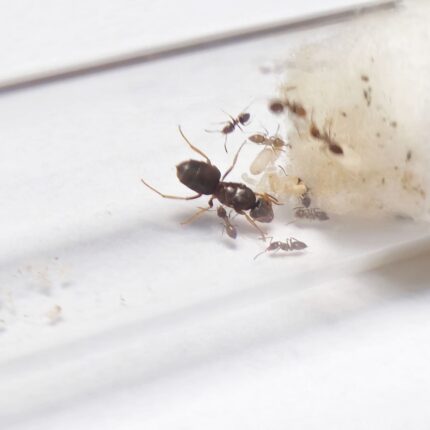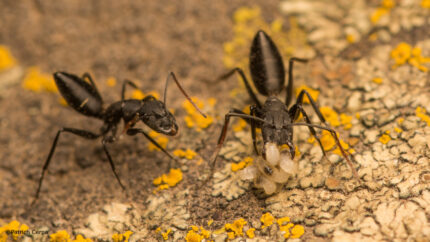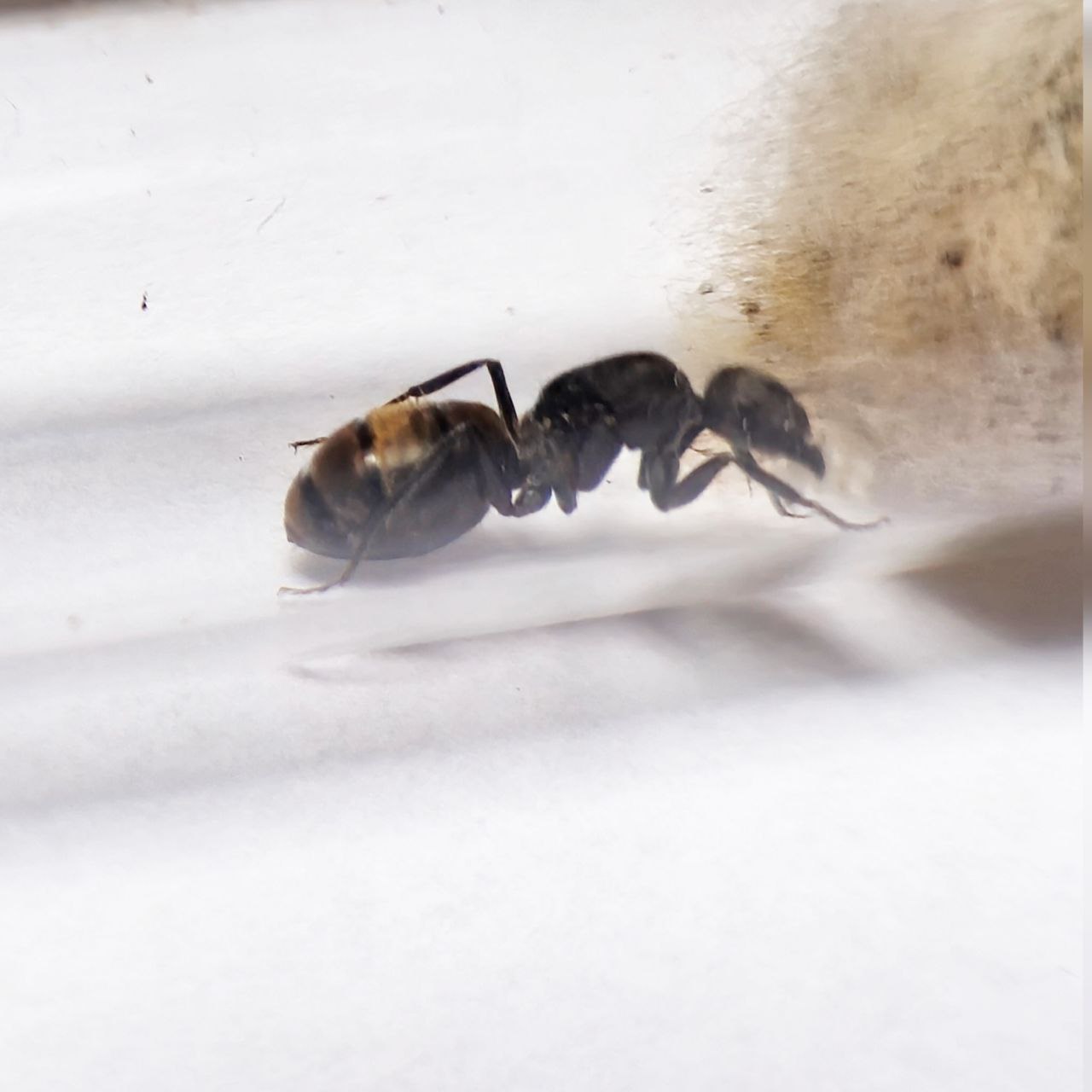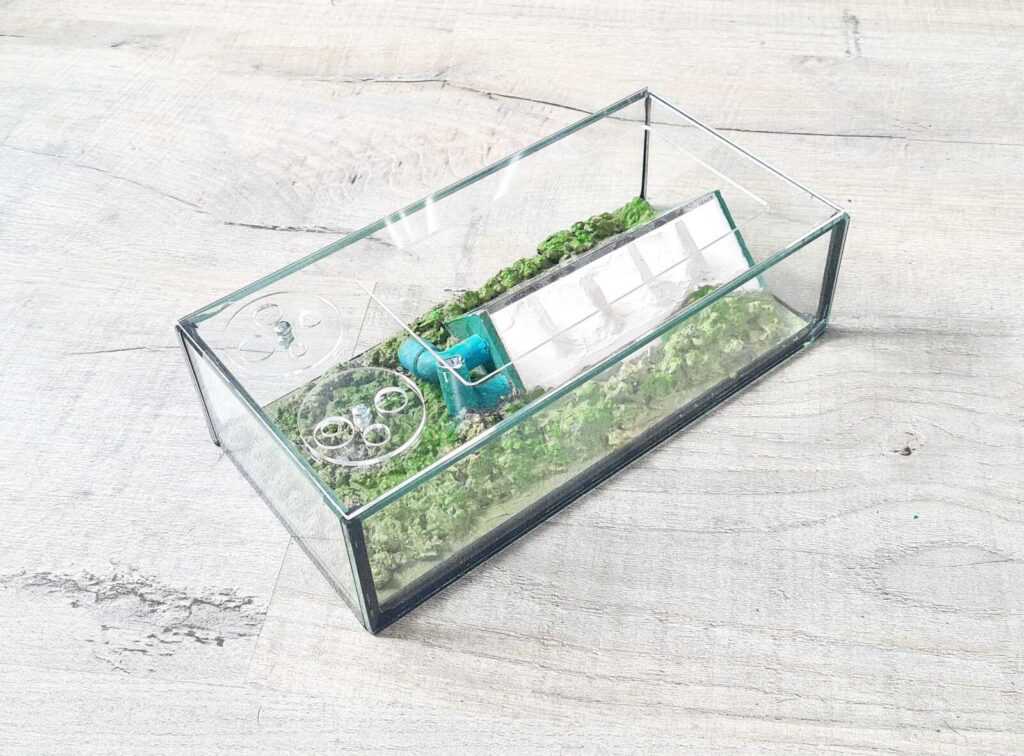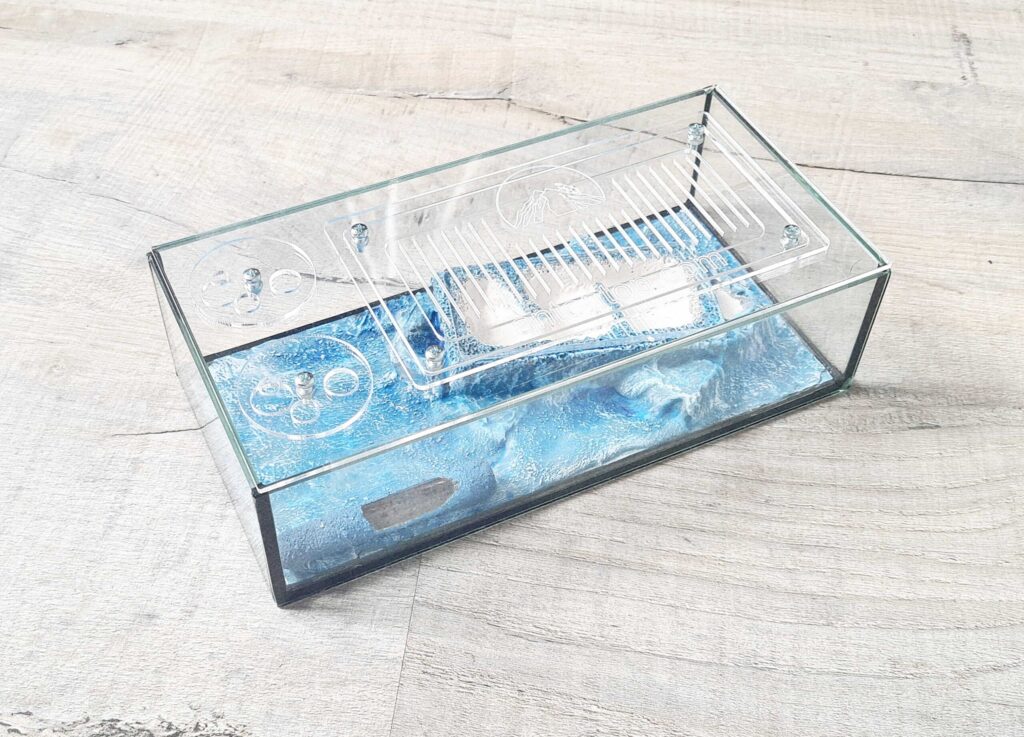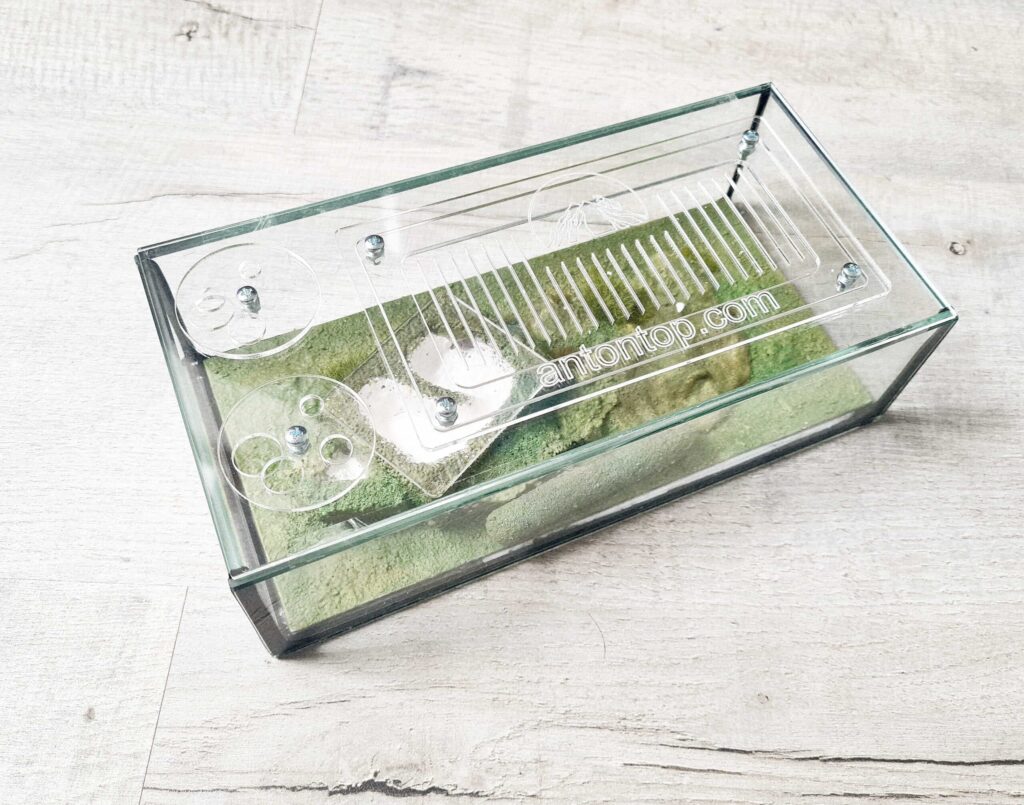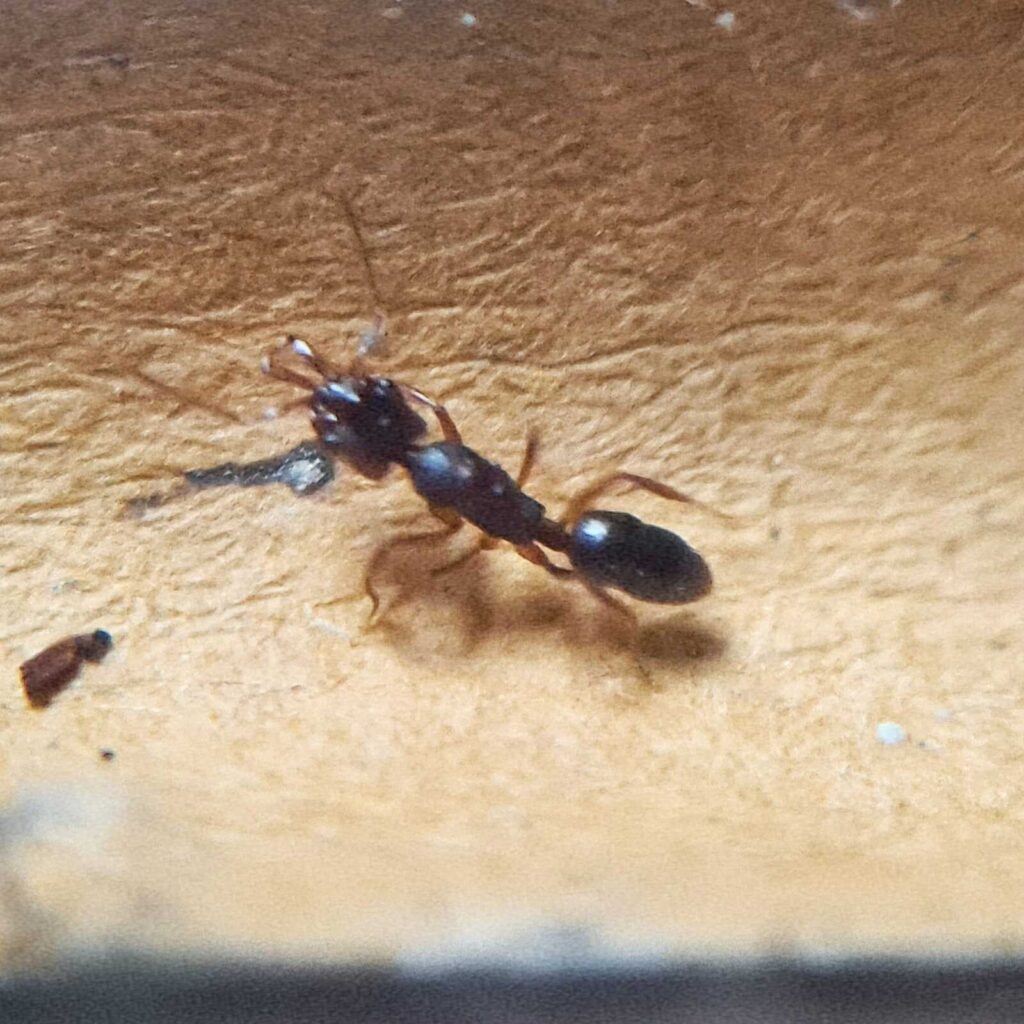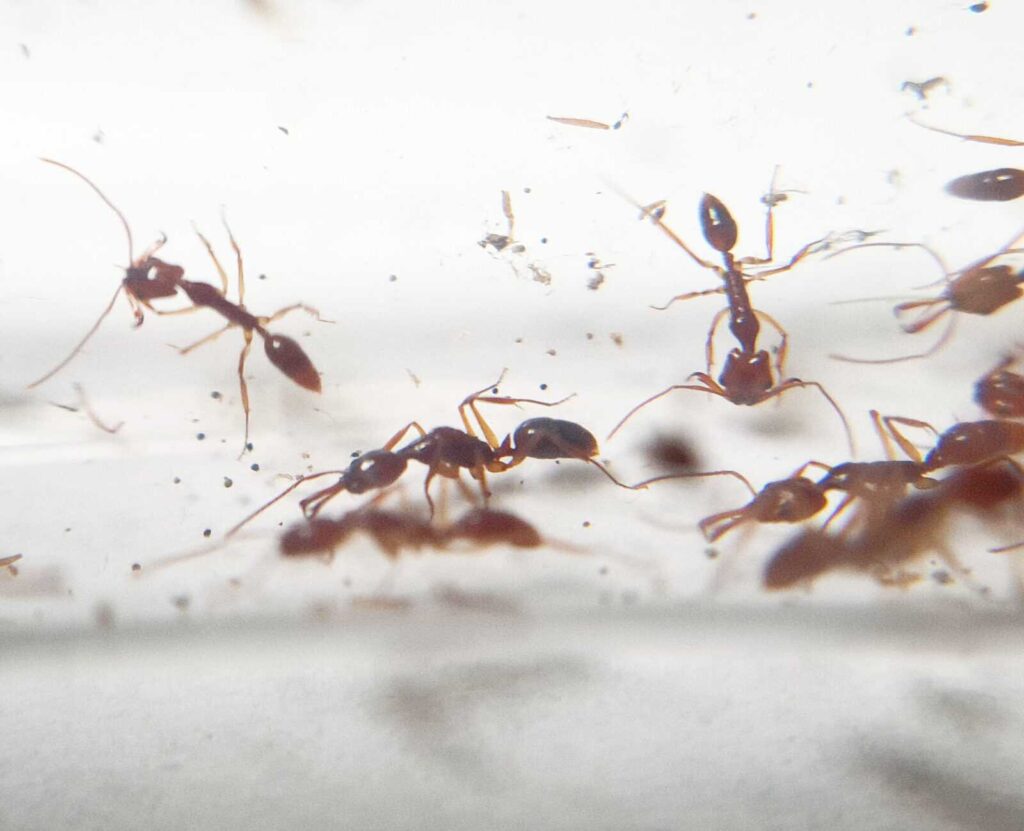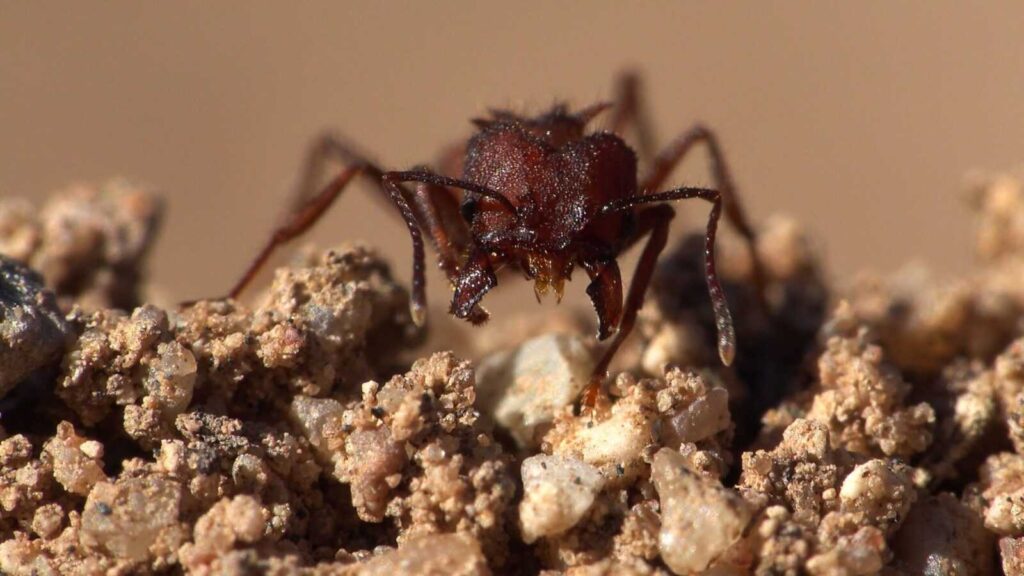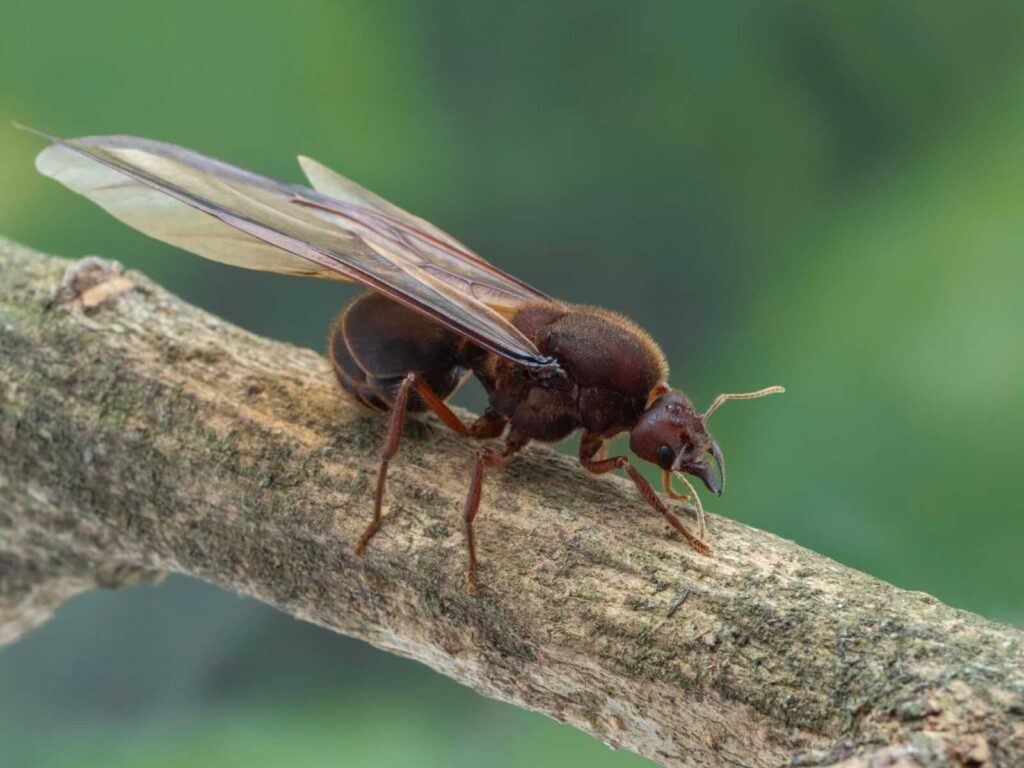Camponotus spinolae
140,31 € – 257,26 €
Worldwide shipping
Free delivery over 500 PLN
The highest quality of goods
Live delivery guarantee
24/7 Personal Support
Fair Prices
Description
Camponotus pseudolendus is a monogynous ant species with colonies of up to 10,000 workers. They develop at a moderate to fast pace and show clear polymorphism. Queens typically measure around 17–19 mm, workers range from 5 to 11 mm, and majors can reach 12–14 mm.
Additional information
| Behavior | |
|---|---|
| Difficulty in breeding | |
| Origin | |
| The size of ants | |
| Wintering |
Camponotus spinolae
Colony Type: Monogynous (occasionally polygynous in founding stages)
Colony Size: Up to 5,000 workers (in mature colonies)
Development Speed: Medium to Slow
Size:
• Queen: 13–15 mm
• Workers: 6–12 mm (major polymorphism with large majors and smaller minors)
Coloration:
Striking bicolored appearance – typically red or reddish-brown head and mesosoma with a dark brown to black gaster. Their large size and elegant form make them one of the more visually impressive Camponotus species.
Diet:
• Insects (e.g., crickets, fruit flies, roaches) – best offered fresh or lightly crushed
• Sugar water or syrup (4 parts water to 1 part sugar or honey)
• Fruits (apple, melon, grape, banana)
• Protein jellies
• Unsalted, cooked protein (e.g., chicken, egg white, shrimp)
Tip: Rotating protein and sugar sources keeps the colony healthy and active.
Environmental Conditions
• Humidity:
Arena: 40–60%
Nest: 50–70%
• Temperature:
Arena: 24–30 °C
Nest: 23–27 °C
Avoid prolonged high humidity in the nest to prevent mold, especially when using organic nest materials.
Unique Traits of Camponotus spinolae
This species is notable for its dimorphic worker caste, which includes large-headed majors and smaller, agile minors. While they lack repletes like Myrmecocystus, C. spinolae are extremely active foragers, and their large colony size and bold behavior make them a pleasure to observe.
They are also known for strong mandibular strength and can subdue live prey effectively. While not aggressive toward humans, they can bite when disturbed.
Nesting Recommendations
Camponotus spinolae prefers nests made from:
• Acrylic (with moisture chambers)
• Plaster
• YTONG (aerated concrete)
• Wood (well-sealed and monitored for mold)
Because of their size and strength, avoid soft plastic tubes for long-term housing. Larger tunnels are recommended to accommodate majors comfortably.
Summary
Camponotus spinolae is a bold, robust, and visually stunning carpenter ant species. With their dynamic caste system, active foraging, and manageable care requirements, they are ideal for intermediate to advanced ant keepers. Though slower to develop than smaller species, the reward is a colony that commands attention and offers endless fascination.


